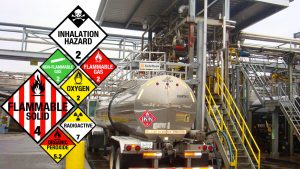
Liquid filling is crucial in many industries, including food and beverage, chemical, and more. In the past, the liquid filling was performed manually, but automation has become the norm in liquid filling processes with advancements in technology and growing demand for efficiency. This article will explore the future of liquid filling and the role of automation and efficiency in shaping it.
The Importance of Automation in Liquid Filling
One of the primary benefits of automatic liquid filling manufacturing is increased efficiency. Automated systems can fill containers much faster than manual systems, reducing the time required to complete the filling process. This increased efficiency translates into a lower cost per unit and a higher output of the finished product, making automation a critical factor in the competitiveness of any liquid-filling operation.
Another significant benefit of automation in the liquid filling is improved accuracy. Automated systems are equipped with precision sensors and control systems that ensure the accurate filling of each container. This reduces the possibility of human error, which can result in incorrect fill levels and wasted products.
Automated systems are designed to reduce the potential for injury and minimize workers’ exposure to hazardous materials. In addition to increased efficiency and accuracy, liquid filling automation provides employees with a safer working environment. This not only improves the safety of employees but also reduces the risk of contamination, which can have severe consequences for the quality of the final product.
Efficiency in Liquid Filling Operations
Efficiency is a crucial factor in the success of any liquid-filling operation. The faster a product can be filled, the more product can be produced in a given time frame. In addition to speed, efficiency also involves minimizing waste and maximizing the use of resources.
One way to increase efficiency in liquid filling operations is by using more advanced technologies. For example, new filling machines that use advanced sensors and control systems can be programmed to fill containers with greater precision, reducing the amount of wasted product. In addition, automated systems monitoring and adjusting fill levels in real-time can minimize the time it takes to fill each container, increasing overall efficiency.
Another way to increase efficiency in liquid filling operations is by optimizing the filling process. This can be achieved by analyzing the current process and identifying areas where improvements can be made. For example, reducing the number of containers that need to be manually handled can significantly increase efficiency and streamline the filling and labeling process.
The Future of Liquid Filling
As the demand for efficient and accurate liquid filling continues to grow, automation and efficiency will likely play an increasingly crucial role in shaping the industry’s future. Advanced technologies, such as artificial intelligence and the Internet of Things, will likely become more widespread, allowing for even greater automation and efficiency in liquid-filling operations.
In addition, the growing focus on sustainability and reducing waste will drive the development of new technologies that minimize resource use and waste. For example, the use of closed-loop systems, in which the liquid filling process is fully automated and waste is recycled, will become more common in the future.
Conclusion
The future of automatic liquid filling manufacturing is likely to be shaped by automation and efficiency. Automated systems provide increased efficiency, improved accuracy, and a safer working environment. At the same time, using advanced technologies and optimization of the filling process will help to further increase efficiency in liquid filling operations. As the demand for sustainable and efficient liquid filling continues to grow, it is clear that automation and efficiency will play a crucial role in shaping the future of this vital industry.



